This article was co-authored by Jacqueline Regev. Jacqueline Regev is a Driving Instructor and the Founder & CEO of Bubble of Safety Driving School. With over 20 years of education experience, she specializes in encouraging people to develop their skills to become safe and courteous drivers. Jacqueline earned a Bachelor's Degree from UCLA and an MA from Chapman University. She is also pursuing a PhD from UC Santa Barbara.
There are 15 references cited in this article, which can be found at the bottom of the page.
This article has been viewed 907,840 times.
As gas prices rise, the money in our wallets evaporates more quickly. There are many ways you can spend less money on gas and reduce your overall fuel consumption, but you must think it through and begin formulating new plans! One technique that has been around for a while but has drawn more attention recently is hypermiling. However, use your head because some hypermiling techniques are illegal and extremely dangerous.
Steps
Maintaining Your Car
-
1Change those spark plugs often! Platinum spark plugs may claim to last 100,000 miles (160,000 km), but they have been known to foul up at just 75,000 miles (121,000 km).[1] Spark plugs are relatively inexpensive and (depending on the vehicle) easy to replace. If you're not that handy or mechanically inclined, read some auto repair books or be-friend a mechanic.
-
2Limit your driving. This article includes ideas such as carpooling, combining trips and taking the first parking spot you find.[2]Advertisement
-
3Find good gas prices. This article offers tips about making sure you are paying a competitive price for the gas you do buy. Be sure to recognize the value of the gas you spend to go out of your way.[3]
-
4Take care of your car. A properly maintained vehicle will run more efficiently and give you better mileage, which saves you money in gas.[4]
-
5Fill up efficiently. This involves three things:
- Consider whether to fill your tank up full or halfway. Filling up your tank halfway will reduce your car's weight, increasing your mileage slightly. However, if your nearest gas station is significantly out of the way of your daily route, make sure to take into account the gas spent driving to the station and the value of your time.
- Don't top up your tank between fills. It is wasted money and bad for the environment because it invariably forces liquid fuel into the evaporative emissions system, where it overwhelms circuits that route fuel tank vapors to the engine.[5]
- Wait until you have a quarter tank, but don't push this any further. Doing this can extend your gas mileage because you are hauling a lighter fuel load. It also gives you the opportunity to buy more gas if you run across a bargain. However, in cold weather, you run an increased risk of condensation in the fuel tank. Running a car with less than a quarter tank can shorten the life of the electric fuel pump, and running on empty will often destroy the pump.
-
6Top off the air in the tires every few weeks to the car manufacturer's recommended pressure.[6] This is best done when the tires are cold (have not been driven on more than a mile or so). It is proper for them to have a few psi higher pressure after extensive driving, but filling them hot should generally be avoided unless they are very low on air to avoid inaccuracy. Excessive pressure adds very little efficiency and can cause bad handling and uneven tire wear. Some gas stations, notably Sheetz gas stations, have air pumps that are free to use and automatically inflate the tires to a pressure set on the pump. These are very convenient. (If an automatic pump seems to be adding an unexpectedly large amount of air, double-check its progress with a hand air gauge to avoid overfilling.)
- In California, gas station operators are required to offer free air to customers who purchase fuel.
- In California, gas station operators are required to offer free air to customers who purchase fuel.
Buy a Different Car
-
1Buy a diesel. Some diesel cars offer mileage comparable to popular hybrids. Getting a diesel car also allows for use of bio-diesel or even waste vegetable oil (WVO/SVO) fuel. Though diesel pricing can vary widely from traditional petrol.[7]
-
2Buy a hybrid. Not only do hybrids give you immediate savings at the pump, the U.S. government and your local state offer tax breaks for people who use gas-saving cars. Federal deductions for using gas-saving cars can be as high as $2,000, but check before buying to see if they're still in effect.[8] Also, check with your insurance company because hybrids have higher insurance rates.
-
3Buy a smaller car. Generally speaking, smaller cars are lighter and get better mileage.
-
4Pay more attention to the torque specification than horsepower when evaluating a vehicle for purchase. Many engines produce maximum torque at a rarely used RPM. An engine that produces maximum torque in the range of 2200 to 3000 RPM will yield usable power. An engine operating at its torque peak will be more efficient.
-
5Buy a motorcycle or scooter instead of a car. They are cheaper and often get 70 MPG or more. Riding gear is available for most weather conditions. A good example is the Kawasaki EX250, which costs about $3,000, gets 60-70 MPG at highway speeds, and can go 0–60 mph (96.6 km/h) in under 6 seconds!
Drive Smarter
-
1Avoid idling. While idling, your car gets exactly 0 MPG, while starting the car uses the same amount as idling for 6 seconds. Park your car and go into the restaurant rather than idling in the drive-through. Idling with the air conditioning on also uses extra fuel. Also, avoid going so fast that you have to brake for someone. Whenever you brake, you waste the gas it took to get going that fast.[9]
- Cars can have fuel efficiency and keep up with the community standards for speed limits.
- If you drive at the safe and appropriate speed for the driving conditions, it can save gas and maintain the car better.
- Speeding can burn more gas. It may require you to stop and start frequently and put extra wear on your brakes.
-
2Plan your trips in advance. This can prevent wasting fuel and wasting time. Plan to use alternative routes. Often, back roads can prevent you from stopping at traffic lights and more importantly sitting in traffic jams. Try to schedule your trips and errands when traffic is lighter.[10]
-
3Use a global positioning system (GPS) to navigate and find the fastest and shortest distance to your destination. Avoiding hills and stops will increase your gas mileage.
-
4Drive at a consistent speed. Avoid quick acceleration and hard braking. Cruise control will keep you at a constant speed, even when going up and down hills.
-
5Avoid using cruise control when driving on hilly highway roads. The cruise control will keep you at a constant speed, which means it will not anticipate a coming hill and accelerate to meet it. It will make the car idle downhill and then flaw it for the uphill sections. It is far more efficient to turn it off on these roads and maintain the flexibility of normal driving.
-
6Avoid stops. If approaching a red light, see if you can slow down enough to avoid having to actually stop (because you reach the light after it is green). Speeding up from 5 or 10 mph (8.0 or 16.1 km/h) will be easier on the gas than starting from full stop.
-
7Anticipate the stop signs and lights. Look far ahead; get to know your usual routes. You can let up on the gas earlier. Coasting to a stop will save the gasoline you would otherwise use maintaining your speed longer. If it just gets you to the end of a line of cars at a red light or a stop sign a few seconds later, it won't add any time to your trip. Ditto for coasting to lose speed before a highway off-ramp: if it means you catch up with that truck halfway around the curve instead of at the beginning, you haven't lost any time. In many cities, if you know the streets well, you can time the lights and maintain the appropriate speed to hit all green lights. Usually this is about 35 to 40 mph (56 to 64 km/h).
-
8Maintain a safe following distance. Don't stick to the bumper of the car directly in front of you. You will brake more and accelerate more to keep that unnecessary and dangerous narrow gap. This also gives you a lot more room to play with when you are timing traffic signals. Likewise, ignore tailgaters. They will tailgate you whether you go the speed limit, or 100 mph (160 km/h) over the speed limit. Allow them to pass when it's convenient.[11]
-
9Slow down. Air resistance goes up as the square of velocity. The power consumed to overcome that air resistance goes up as the cube of the velocity. Rolling resistance is the dominant force below about 40 mph (64 km/h). Above that, every mph costs you mileage. Go as slow as traffic and your schedule will allow. Drive under 60 to 65 miles per hour (97 to 105 km/h) since air grows exponentially denser, in the aerodynamic sense, the faster we drive. To be precise, the most efficient speed is your car's minimum speed in it's highest gear, since this provides the best "speed per RPM" ratio. This is usually about 45 to 55 mph (72 to 89 km/h).[12]
-
10Take off slowly from a full stop. This is one adjustment that will have dramatic effects on your gas mileage; don't tear off from a stoplight or stop sign![13]
-
11Stay well away from store fronts where you will spend significantly more time idling and waiting for pedestrians and other vehicles.
-
12Use A/C only on the highway. At lower speeds, open the windows. This increases the drag and reduces fuel efficiency, but not as much as the A/C at low speeds (35-40 mph). Even better, at any speed, turn on the vent when it is cool outside or open windows just a few inches. The air con - when used a lot - is known to use up about 8% of the fuel you put into your car.[14]
-
13Shift into neutral if you are not comfortable with downshifting. Standard transmission vehicles may save gas by shifting into neutral when going down hills steep enough to maintain speed (although engine braking is safer on steeper declines). Do not do this in a hybrid car; they use this "regenerative engine braking" to generate electricity and charge the batteries. Note: This strategy will result in more wear and tear on your brakes. Neither of these strategies are recommended for normal automatic cars.
-
14Park in the shade. Gasoline actually evaporates right out of your tank, and it does so faster when you park directly in the sun - winter or summer. Parking in the shade also keeps it cooler inside, and you will need less A/C to cool off when you get back in. If there is no shade available, park so that your gas tank (the actual tank under the car, not the valve to fill it) is facing away from the direct sun. Also, today's fuel systems are supposed to be airtight. Your gas cap should have a seal in it. Make sure that the seal is keeping the fumes in and outside air out.[15]
Community Q&A
-
QuestionShould I try to coast behind a car?
 Community AnswerDrafting can reduce the amount of force on your car, so yes. Driving slightly lower than the speed limit may also reduce emissions. Remember to follow the 2-second or 4-second rule.
Community AnswerDrafting can reduce the amount of force on your car, so yes. Driving slightly lower than the speed limit may also reduce emissions. Remember to follow the 2-second or 4-second rule. -
QuestionWill coasting in neutral damage anything if I'm driving on the highway?
 Community AnswerIf your car has manual transmission, you can coast anywhere and in any speed you want. The only limits are physics (coasting uphill may not move you forward), road safety and maybe the law. Aerodynamic draft will slow you faster on higher speeds, so you'll need more downslope to maintain 100mph, than 20mph.
Community AnswerIf your car has manual transmission, you can coast anywhere and in any speed you want. The only limits are physics (coasting uphill may not move you forward), road safety and maybe the law. Aerodynamic draft will slow you faster on higher speeds, so you'll need more downslope to maintain 100mph, than 20mph.
Warnings
- Keeping tires at the correct air pressure can go a long ways towards saving more money on gasoline cost.⧼thumbs_response⧽
- Stopping and starting the engine frequently will cause extra wear. Don't stop the engine if you are going to idle for less than a minute.⧼thumbs_response⧽
- Motorcycles and other unenclosed vehicles are extremely dangerous. Some, but not all, of this danger can be reduced by driving carefully and attentively.⧼thumbs_response⧽
- Nearly all gas-saving devices do not work, and some even decrease fuel mileage. Intake twisters, gas pills and fuel line magnets do not help mileage. Even if the mileage improvement claims were true, they often cost enough to negate any potential savings.⧼thumbs_response⧽
- Drafting is dangerous. All the fuel savings in the world will not matter a bit if you get wrecked while 'trying to save gas'. Safe driving habits will save a lot more money than risky driving, and maybe even save lives. Slow down. Be careful.⧼thumbs_response⧽
- Be very careful when shifting into neutral when going down hills. You may find yourself going a lot faster than you thought you would. This is actually illegal in some jurisdictions. It is illegal in all US DOT jurisdictions. "Coasting" disengages the engine from the transmission. This allows for uncontrolled motion. If you read any State Driving manual you will learn that coasting is unlawful. It can be unwise due to the change in how the automobile reacts to the braking motion when you disengage the engine from the drive train.⧼thumbs_response⧽
- In very cold environments, it is recommended to allow the vehicle to idle and warm up, rather than just start it and take off. You might save gas, but your engine oil won't do its job until it's fully liquid, so you'll spend more money on overhauls.⧼thumbs_response⧽
References
- ↑ https://shop.advanceautoparts.com/r/advice/car-maintenance/the-differences-between-spark-plugs
- ↑ https://www.epa.gov/transportation-air-pollution-and-climate-change/what-you-can-do-reduce-pollution-vehicles-and-engines
- ↑ https://www.fueleconomy.gov/feg/gasprices/states/index.shtml
- ↑ https://www.consumerreports.org/car-repair-maintenance/tips-on-how-to-maintain-your-new-car/
- ↑ https://www.best-money-saving-tips.com/fuel-saving-tips/gas-pump-money-saving-tips/
- ↑ https://www.familyhandyman.com/automotive/tires/car-maintenance-make-your-tires-last/
- ↑ https://www.moneyunder30.com/will-owning-a-diesel-save-you-money
- ↑ https://www.fueleconomy.gov/feg/taxevb.shtml
- ↑ https://www.edf.org/attention-drivers-turn-your-idling-engines
- ↑ https://www.fueleconomy.gov/feg/planning.shtml
- ↑ https://www.drive-safely.net/gas-economy/
- ↑ https://www.consumerreports.org/fuel-economy-efficiency/how-to-get-the-best-fuel-economy-now/
- ↑ https://money.usnews.com/money/blogs/flowchart/2008/07/10/5-gasoline-wasting-mistakes-most-drivers-make
- ↑ https://www.popsci.com/how-to-save-gas-driving/
- ↑ https://www.fueleconomy.gov/feg/hotweather.shtml
About This Article
Saving money on gasoline starts with maintaining your car. Get frequent oil changes, replace your spark plugs as soon as they go bad, and check and adjust your tire pressure every few weeks to keep your vehicle running efficiently. When driving, accelerate slowly after stops to avoid burning extra fuel. Whenever you can, roll down your windows instead of using your A/C because air conditioners can burn up to 8% of your car's gasoline. For advice about buying a fuel efficient vehicle, keep reading!


-Step-9-Version-2.webp)

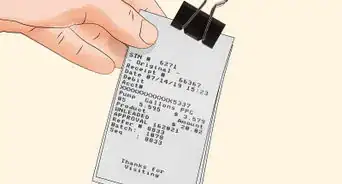
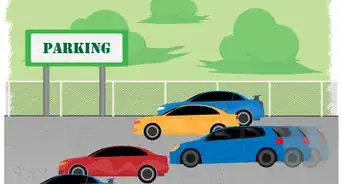

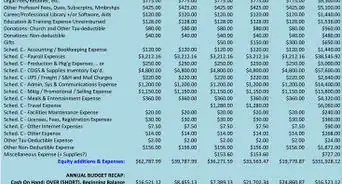

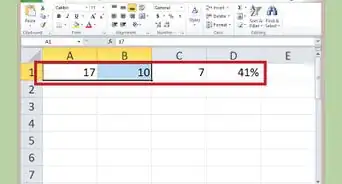

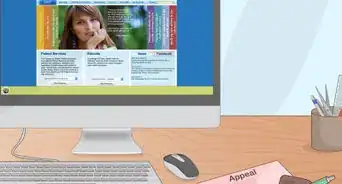














-Step-9-Version-2.webp)



































